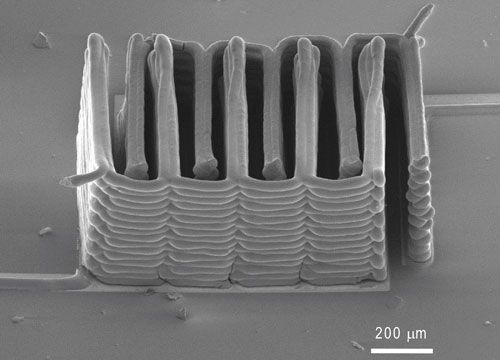Article
3D printed batteries could power medical implants
3D printing could lead to new practical and tiny medical implants thanks to a Harvard team developing 3D printed micro-batteries.

Image via Harvard.eduMedical technology is getting smaller and smaller. Medical implants have been developed in recent years that are incredibly small, but can suffer from the problem of powering such tiny devices. Often, the power sources for these devices are larger than the devices themselves. This problem may have just been solved by a team at Harvard University and the University of Illinois at Urbana-Champaign.
The dual-university team has developed the ability to use 3D printing to print lithium-ion micro-batteries that are as small as grains of sand. The miniature batteries could power small devices that can be used in healthcare and many other fields. To create the batteries, the printer places precisely interlaced stacks of small electrodes on top of one another. The small stacks of electrodes are smaller in width than a strand of human hair.
The senior author of the study, Jennifer A. Lewis, was quoted saying “Not only did we demonstrate for the first time that we can 3D-print a battery; we demonstrated it in the most rigorous way."
A Harvard.edu article explains the breakthrough,
"…manufacturers have traditionally deposited thin films of solid materials to build the electrodes. However, due to their ultra-thin design, these solid-state micro-batteries do not pack sufficient energy to power tomorrow’s miniaturized devices… The scientists realized they could pack more energy if they could create stacks of tightly interlaced, ultrathin electrodes that were built out of plane. For this they turned to 3D printing."
The study was published online in the journal Advanced Materials.





